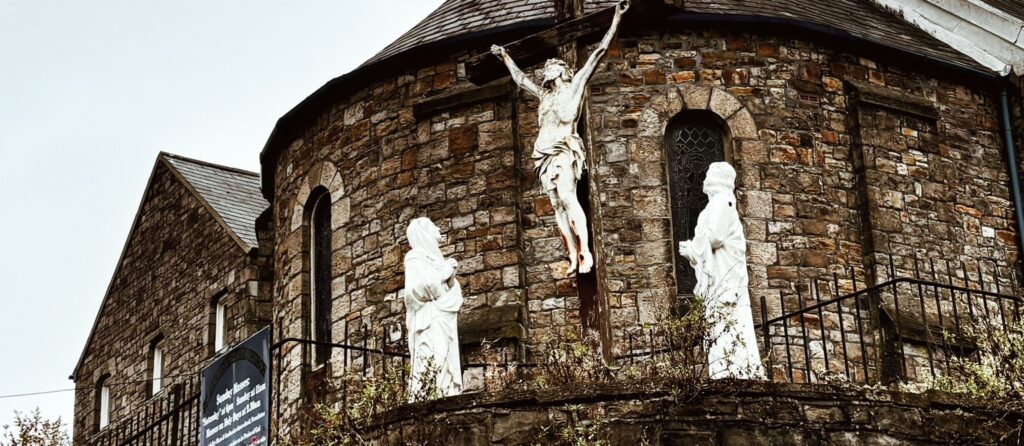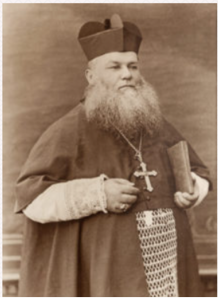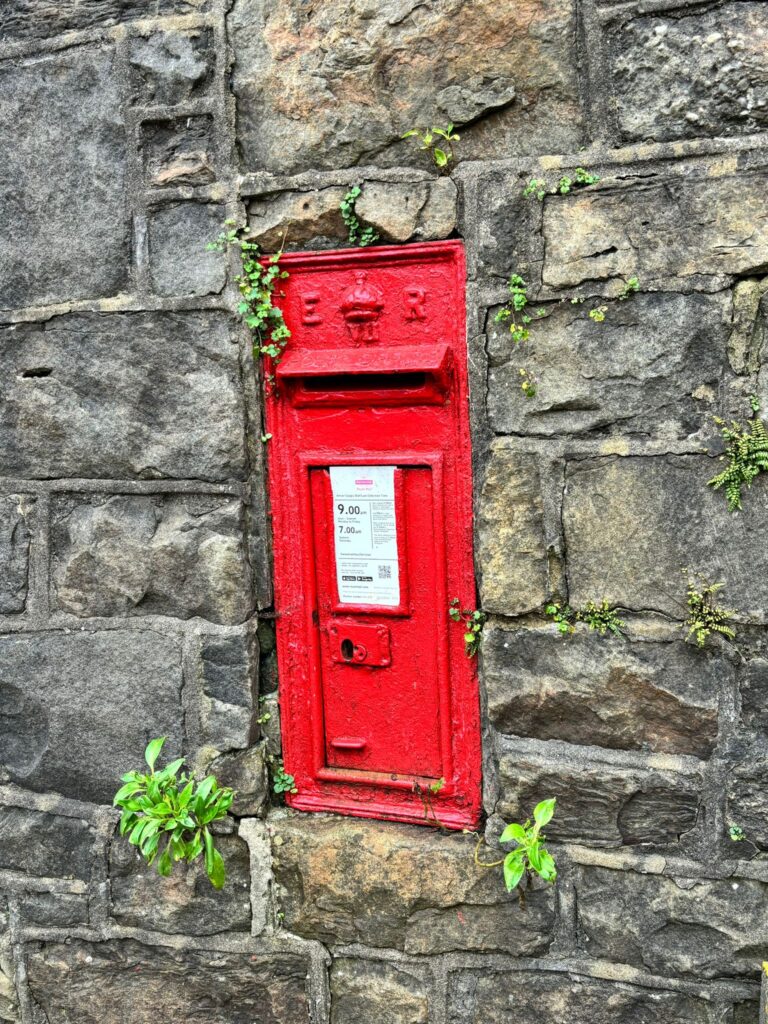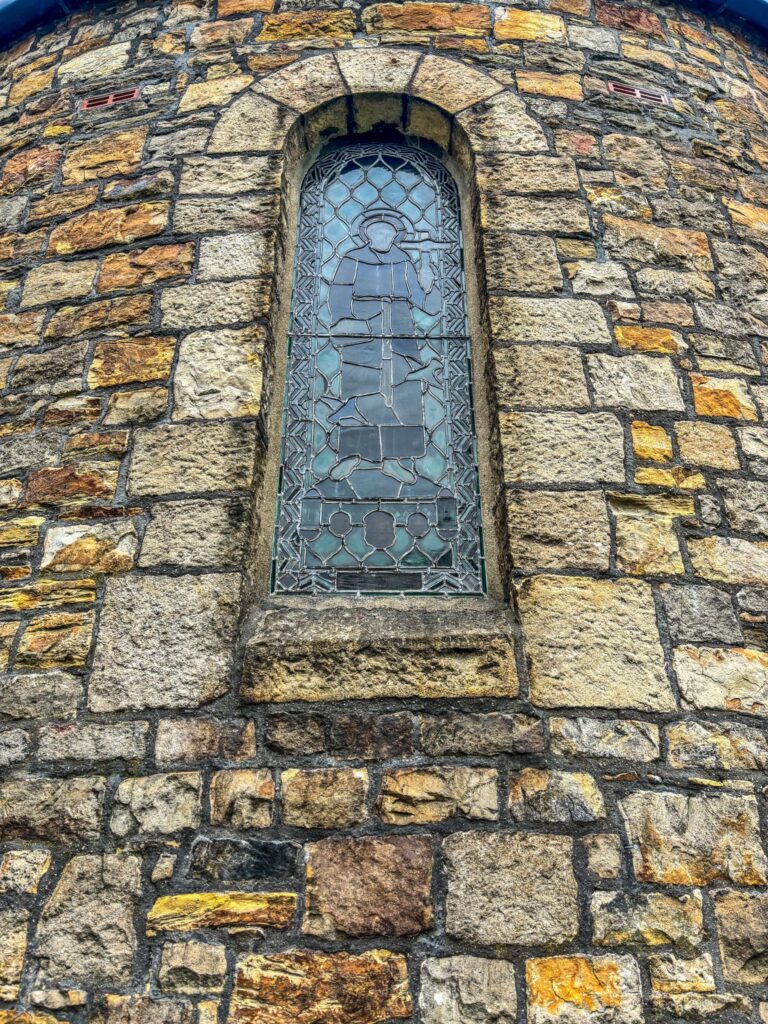St. Alban’s, Pontypool
History
A Catholic Church at Pontypool had been unknown since the Reformation. Catholics assembled in a room, part of the back premises of the Crown Hotel (now the Iceland shop in town). On Thursday, the 23rd of July the church was formally opened with High Mass, celebrated in the presence of the Bp. coram episcopo, assisted by a considerable number of the Catholic clergy, who formed a beautiful procession around the church and up the aisle. Among the congregation were representatives of other denominations. A choir from Newport, assisted by Mr. England, the distinguished vocalist of Bristol, added much to the effect of the solemn rites. The Rev. T. M. McDonnell of St. Augustine’s Church, Clifton, preached from Revelation upon the present state and prospects of the Catholic Church in this country and the duties of Catholics to be charitable towards all Christian people. In the evening sung vespers was followed by a by a discourse by the Right Rev. Dr. Brown, who chose ‘The Lord alone shall be exalted”(Isaiah 2. 11).
Afterwards all, clergy and laity, dined together at the Crown Hotel.
St. Alban’s Church was built circa 1840 and designed by English Gothic Revival architect Joseph John Scoles.

St. Alban’s church was designated a Grade II listed building on 28 08 1997.
Separately listed as Grade II are the presbytery and surrounding walls including the gateway, the steps and post box!
In the middle of the Nineteenth Century, many Irish families had been driven out of their home land by the potato famine and poverty. They came to South Wales, looking for employment where they succeeded in finding jobs in the iron works and the coal mines. In 1838 there were around 600 Catholics in the town of Pontypool.
“Another cargo of starving Irish was thrown ashore upon our muddy beach – some with the hand of death upon them and all presenting a most wretched spectacle.” (Brian Foster 2005)
Missions were established across the South Wales mining districts to serve the growing Catholic population and one was set up in Pontypool in 1844. That year construction of St. Alban’s Catholic missionary church began and was completed and opened by Dr Brown, Bishop of Newport and Menevia in 1846.
The Catholic population of the town soon increased to 870. In 1860, due to a shortage of secular priests, the Capuchin Franciscans, based in Pantasaph, Flintshire, took over the Mission and church to serve the growing Catholic communities. They established a house of studies on the site to serve the Catholic missionary church.
“In 1860 Pontypool had a Roman Catholic priest who was barely able to keep body and soul together on the stipend provided by the resident Irish, themselves for the most part desperately poor. Enter Father Elzear Torregiani, a Franciscan Capuchin who, after the departure of his secular predecessor, arrived in Pontypool only to meet a deputation of Irish insisting that they did not want a foreign priest. Most men would have despaired at such a welcome and with such a task ahead of them but Father Elzear concluded it was just the place for the Franciscans and with the zeal of a Franciscan set to work.

Father Elzear Torregianni
At this point there is a walk-on part for Miss Mary Peterson, a Catholic convert from England with a fervent wish to devote herself to God’s work as a teacher in the Pontypool area.
With a cheerful optimism which would have daunted a lesser soul Fr Elzear wrote to the earnest young woman ‘I have found a lodging for you so will you come as soon as possible? All the people here are very poor but Our Lord was born poor and lived poor and died poor and so here you can be like Him.” (Brian Foster 2005)

Fr Elzear Torreggiani OSF took charge of the mission at Pontypool and organised the building of the monastery and a large school. Reaching out from Pontypool further Missions were established to serve Abersychan (1863), Risca (1868), Abertillery (1875-6) and Cwmbran (1882). (The Parish History (ourladyoftheangels.org.uk)
Circa 1881/2 The church was extended to the west and a gallery added which increased capacity to 240. Later, around 1870-1 the Presbytery was added. This served as the house of studies until 1891 when the friars withdrew and the ministry was undertaken by secular priests.
The church was closed for renovation in the early part of the 1950s and reopened to celebrate Midnight Mass on Christmas Eve, 1954. It was consecrated on 13 October 1955 by Archbishop McGrath of Cardiff.
Coloured ceramic Stations of the Cross and ceramic crucifix over the entrance to the Lady Chapel, designed by Adam Kossowski, were installed in 1955-6.
The stained glass windows in the apse depict St Alban, Christ the King, and St Francis. To the west (at the back) is a circular painted window which depicts the Annunciation and other Marian scenes. Also, in the nave, hang two oil paintings of Franciscan Ss Leopold Mandic and Padre Pio.

A new forward altar dedicated by Archbishop Murphy of Cardiff was installed 17 June 1980.
Special thanks to the late Brian Foster for his book entitled Famine, Furnaces and Franciscan Missions. The Eastern Valley Irish 1845 – 1880. This page is dedicated to the memory of Brian Foster, a much loved parishioner and everybody’s friend. Brian passed away in January 2022 at the age of 81. He is fondly remembered by all who knew and loved him.
